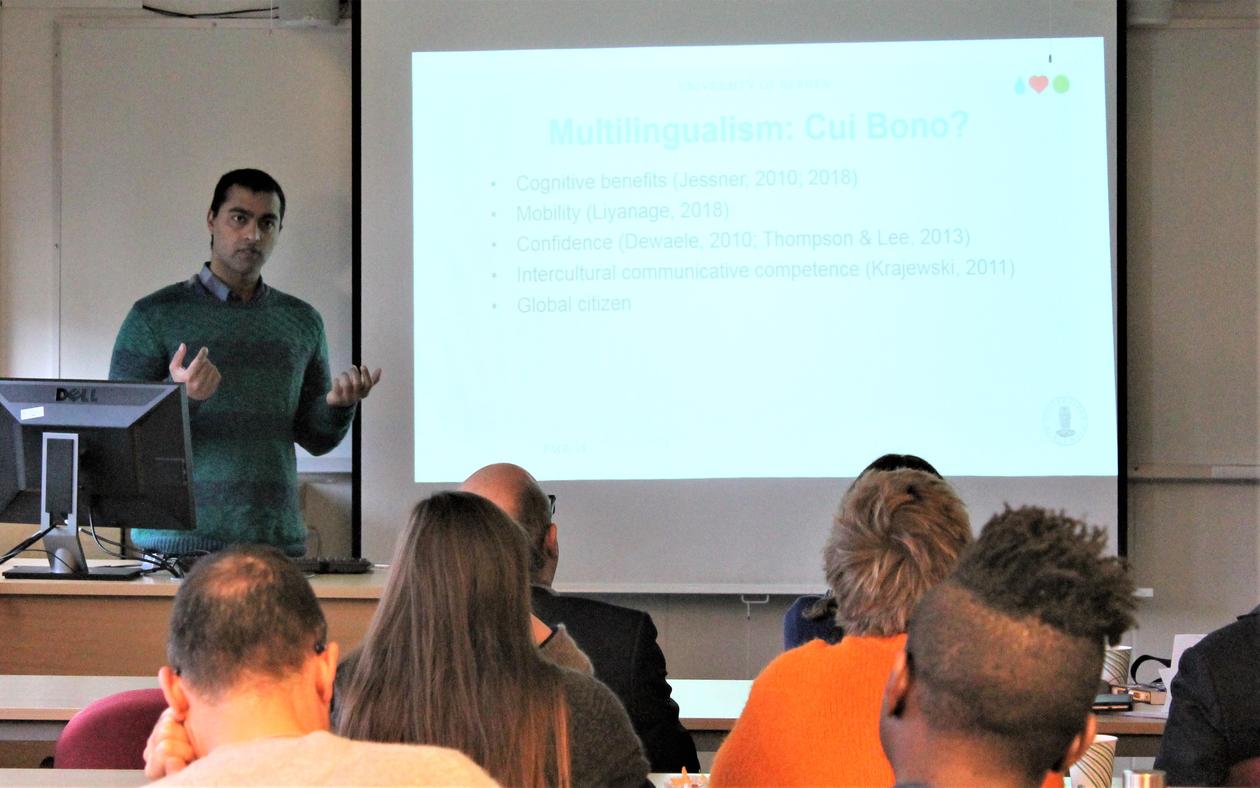Med fleirspråk på hjernen
Forskergruppen Med fleirspråk i tankane blei lansert 23. november.

Hovedinnhold
Linguistic diversity has always been a feature of Norwegian society. Besides the two official languages Sami and Norwegian, Norway has a rich variety of local dialects and English is spoken by the vast majority of the population. Furthermore, most pupils decide to study a second foreign language in secondary school. In addition, the linguistic landscape in our country has been enriched by a host of immigrant languages in the last decades.
This unique sociolinguistic scenario has a direct bearing on how languages should be taught and learned. The research group Multilingualism on My Mind, launched on Nov. 23 at the University of Bergen, was created in reply to the changing linguistic landscape in Norway. Multilingualism on My Mind aims to explore different aspects of multilingualism in education and to foster research collaboration. Its main objective is to promote the development of multilingual and multicultural awareness among language learners, teacher trainees and in-service language teachers in various educational settings. The research team, headed by Prof. Åsta Haukås, organises seminars (by staff, PhD students and external speakers), as well as roundtable discussions, where the members share and exchange ideas and present their research. By building a network of researchers, teachers and professionals in education, Multilingualism on My Mind will contribute to the current debates centered on multilingualism in schools and higher education and to the improvement of educational policies and classroom practices.
The launching event of the research group Multilingualism on My Mind was attended by members of the faculty, research professionals, teachers and the general public. During her presentation, Prof. Åsta Haukås talked about a two-year study that aims to assess the language practices and attitudes of students in lower secondary school, grades 8 and 10. The main part of the study consists of a questionnaire that assesses the behaviours and attitudes of schoolchildren in relation to cultures, languages and language learning in and out of school. According to Prof. Haukås, “the project seeks to gain a deeper understanding of the pupils’ views and opinions about linguistic diversity, cultural awareness and the role of foreign language classes in this context.”
The event was closed by a presentation of three of the PhD students involved in the project: Irina Tiurikova, André Storto and Raees Calafato. They talked about their research plans as a follow-up to the questionnaire and their contributions to the project.


